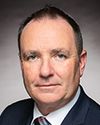Thank you, Mr. Chair.
Mr. Chair and committee members, thank you for inviting us to this meeting.
Statistics Canada would like to contribute to the study of the committee on the financial concerns of the marriage over 60 clause in the Canadian Forces Superannuation Act by presenting information on the number of persons who married or entered into a common-law relationship with a veteran after he or she turned 60, as well as their characteristics.
This information was produced last year at the request of Veterans Affairs Canada through a secure linkage of 2018 tax records with various administrative records, including the Department of National Defence - Canadian Forces personnel cohort file and the PSPC Canadian Forces Superannuation Act legacy file. I would like to mention that Statistics Canada's deliverable was limited to producing four data tables to help provide a general understanding of the population size of persons who married or entered into a common-law relationship with a veteran on or after the veteran's 60th birthday and their socio-economic characteristics. Statistics Canada was not asked anything more specific beyond that with regard to the marriage over 60 clause and the current committee study.
Our data show that in 2018, there were between 4,000 and 6,000 persons who married or entered into a common-law relationship with a veteran on or after the veteran's 60th birthday, and the veteran was still living as of 2018. There were between 2,000 and 4,000 persons who married or entered into a common-law relationship with a veteran on or after the veteran's 60th birthday, and the veteran had passed away as of 2018. Spouses were generally aged over 60 and, not surprisingly, those of deceased veterans tended to be older than those of living veterans. Between 95% and 100% of spouses were women.
To simplify my summary of the results, I will now use the term “spouse” to describe persons who married or entered into a common-law relationship with a veteran after they turned 60.
Depending on the data source used, our results show that in 2018, the median income of spouses who entered into a relationship with a veteran aged 60 and over ranged between $26,000 and $35,000, with spouses of deceased veterans reporting the highest median income.
Survivors of veterans who entered into a relationship at age 60 or after received higher government transfers than spouses of living veterans who entered into a relationship at age 60 or after. In 2018, the median amount of government transfers received by spouses of deceased veterans reached $18,000. This compares with a median ranging between $14,000 and $15,000 for spouses of living veterans. Spouses of deceased veterans also had higher private pension income than spouses of living veterans, with a difference of about $2,000.
While widowed spouses of veterans who entered into a relationship at age 60 or after had higher personal income than spouses of living veterans, they were more likely to be in a situation of low income. In 2018, the proportion of low income ranged between 19% and 23% among spouses of deceased veterans who entered into a relationship at age 60 and over, compared with a proportion ranging between 8% and 11% among spouses of living veterans who entered into a relationship at age 60 and over. The higher prevalence of low income among survivors of veterans is likely related to the fact that these spouses were more likely to be living in a one-income household. In 2018, more than four in five widowed spouses of veterans who married at age 60 and over lived alone.
The Maritimes and the province of Quebec generally had the highest proportions of survivors of veterans who entered into a relationship at age 60 and over living in a situation of low income. Across age groups, the occurrence of low income was highest among widowed spouses aged under 60.
Statistics Canada is committed to monitoring trends pertaining to Canadian military life. For example, in partnership with Veterans Affairs Canada and the Department of National Defence, a report was prepared last year on the prerelease and postrelease income of regular force veterans.
This concludes our opening remarks.
Thank you, Mr. Chair.



